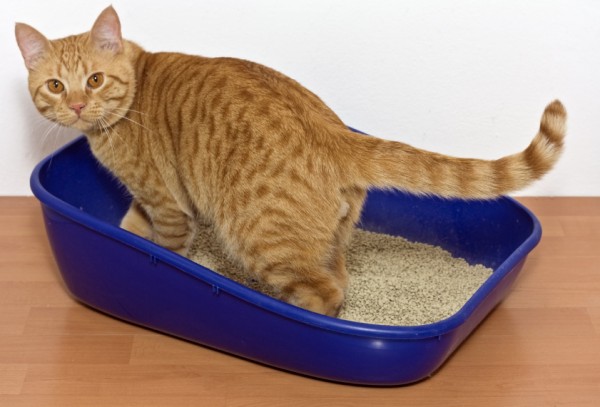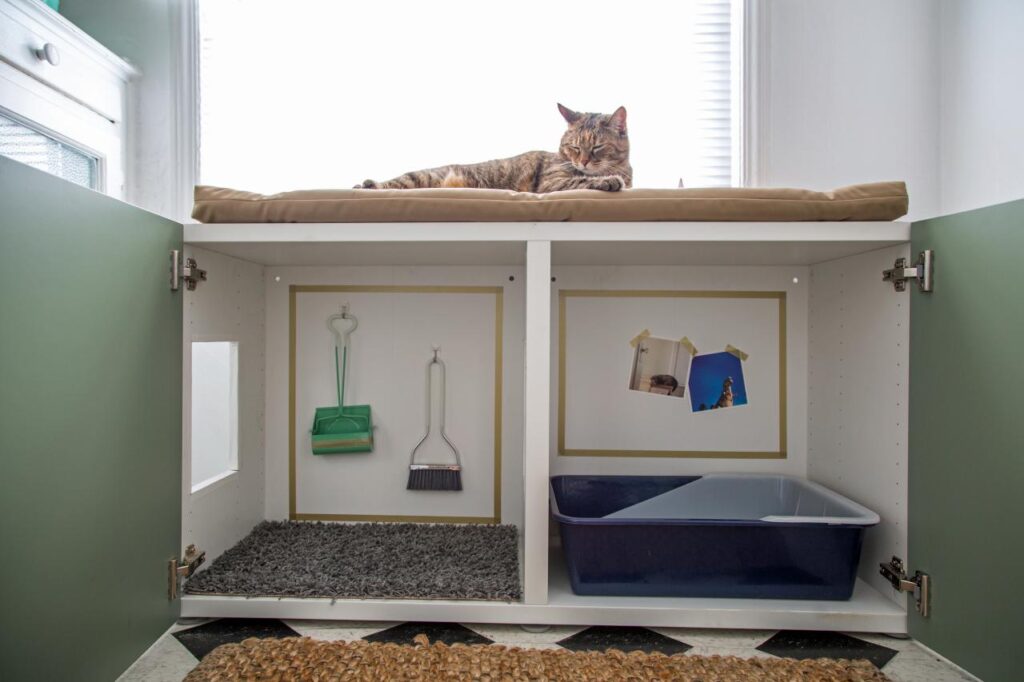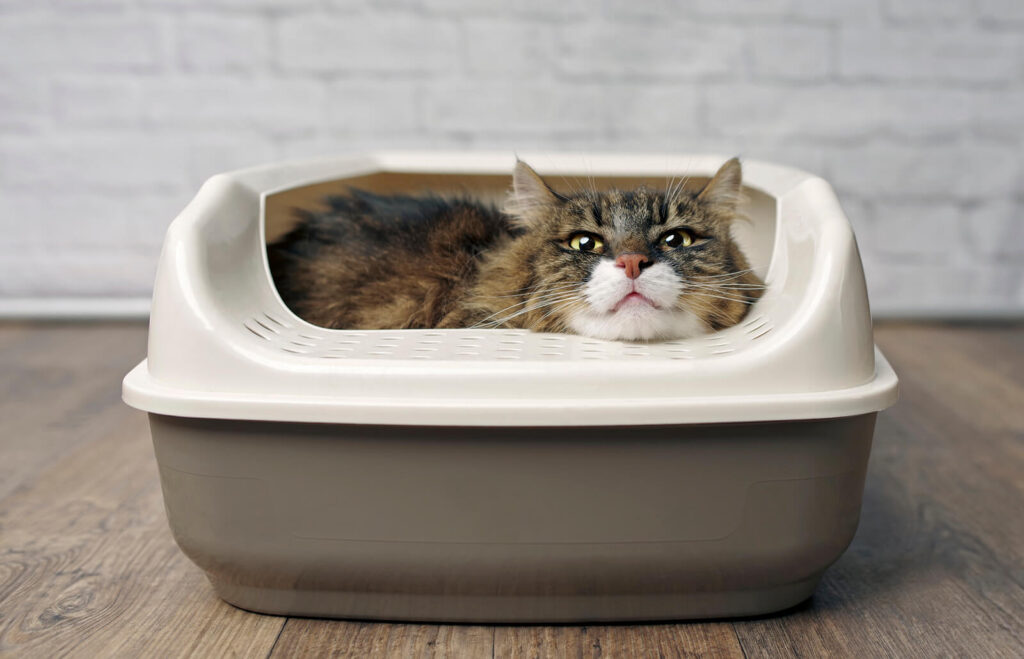Like potty training a baby, teaching a kitten to use a litter box is an experience on its own.
Some kitties just learn the trick in a flash. Count yourself lucky if you own such a cat.
Others have to go through weeks of hardcore litter training.
Just when you think your cat is completely house-trained, you come across his waste sitting on your doormat when you wake up the next morning.
Then there is the last group of cats that just refuse to use the litter box completely.
Anyone who has ever tried to get their cat to pee to eliminate in the right spot in vain knows the frustration and disappointment that comes with it.
If you are in such a position, today we will help you. Here are 10 strategies to attract a cat to the litter box.
1. Check If You Have The Right Litter

Most parents don’t know this but cats are very choosy about where they eliminate. That’s why before you brought the litter box home, he only did his thing in selected areas.
We are talking about a creature that prioritizes self-love over everything else.
If he’s not warming up to the available litter box, chances are he doesn’t like it very much.
Perhaps the clay freaks him out. Maybe it’s just too hard or too soft for him. If it is scented, the scent could be driving him nuts. Is it too high or too low?
Cats have very sensitive paws, especially those that are declawed.
If you can, choose sand-like litter instead of large chunky pieces with uneven edges.
You might have to try a few brands here and there to get the right fit for your feline companion.
2. Have Several Of Them
Are you in a multi-cat household? If yes, you definitely need more than one litter box else you will run into issues with litter box training.
Cats, like dogs, have social hierarchies where some are subordinates and others dominants.
Because of the constant need to mark one’s territory, wars can arise in the kingdom.
In such a case, some cats will have the need to spray and mark their territory.
Once the territory is marked, the other cats will not come near the litter box.
Besides marking the territory, one cat may refuse to use a specific litter because it is already soiled by her counterpart who eliminated before her.
The best thing to do is to buy several litter boxes and place them at different locations around the house.
Typically, you should have a litter box or two on every floor of your home to make things easy for your cats.
3. Clean The Box
Speaking of soiling, cats are famous in the animal world for keeping high hygiene standards.
They don’t fancy living in dirty, messy places. That includes elimination spots as well.
You might have noticed this already if you own a kitty. Felines have a strong sense of smell and will pick up very minor scents from a mile away.
If your dog or another cat urinates in the litter a few hours (or days) before, your kitty will pick that up and refuse to use it.
It could even be her own waste that sits there but she will refuse to use the box the next time she needs to defecate.
To attract him to use the box, clean the box regularly. Sometimes this means cleaning after every use.
If your cat doesn’t mind, you can clean on a daily basis.
If possible, use fluorescent backlight to locate urine stains.
Once you do, grab an enzymatic cleaner (we highly recommend Rocco & Roxie because it clears the stain and odor) from the store and clean the area with it.
Just ensure it is made specifically for pets. Stay away from ammonia and other harsh chemicals like household cleaners.
4. Move The Litter Box

Even if your cat likes the litter box but is inappropriately located, best believe he will not eliminate there.
Ideally, felines excrete in private, protected, and quiet regions. These include beneath a suitcase, under a desk, beside the closet, or in a hidden corner.
If he’s having a problem using the box, perhaps it’s because it is located in a spot he doesn’t like.
Think of moving it to low-traffic areas that are easily accessible around the home.
Also, consider placing the box in the usual spot your cat loves to eliminate.
Related Post: How to Get Cat to Use Litter Box in New House (12+Tips)
5. Think Comfort
In addition to being incredibly clean, cats are also creatures of comfort.
For one, the litter should be large enough to accommodate the cat’s entire body.
If any part of the body sticks out when she tries to do her business, he’s less likely to use the box.
Even if she manages to use it, the probability of the waste ending on the floor is very high.
Similarly, small cats get uneasy when they get litter boxes that are too big or inaccessible.
If you have a small cat at home, make sure the litter is convenient for him to enter and leave.
As he grows up, be sure to change the size of the box.
6. Food And Waste Don’t Mix
Is the litter box placed next to your cat’s bowls?
If the answer is affirmative, then that could the reason your kitten doesn’t use the litter.
In the wild, a cat keeps his elimination area as far away from his nest as he can.
Doing this offered protection from the cat as predators stayed away from the living space.
The same way you wouldn’t eat your food in the toilet, your cat also needs the two spots to be separate.
Move the box to a spot away from the food bowls and observe what happens.
7. Retrain
You may think that your kitty is trained to eliminate in the box when he is really taught to use the location of the box.
This means that if you move it an inch, he will eliminate in the original spot where the box used to be.
If you’ve moved houses, he won’t know how to use the litter box.
To solve the problem, you might need to retrain the cat to actually use the litter box as he should. This is a major setback, of course, but it will pay off in the end.
8. Have Him Spayed Or Neutered
An unneutered or unspayed cat presents more problems when it comes to box training than their neutered or spayed counterparts.
This is because as the cat becomes sexually mature, he will want to mark his territory and ward off other males from coming around. Females do the same although on a lower scale.
If you are planning to get the boy neutered or the girl spayed, now would be a great time.
If you are breeding, talk to a cat professional to learn how to properly train him.
9. Use A Litter Attractant

A litter attractant lets out a scent that draws the cat to its place.
The formulae vary but most utilize perennial herb that produced nepetalactone – a scented oil that affects the behavior of cats in a positive way.
Things like alfalfa flowers, rosemary, or timothy can also be used.
When you put the attractant in the litter box, the fragrance will motivate the cat to defecate and urinate in the litter.
Here are the top 3 litter attractants that we often recommend for cat parents:
10. Bring Him To The Vet
Tried all the above and there is no change?
You could be looking at a sick cat. If he licks his genitals, he might be suffering from a urinary tract infection (UTI) or a blockage of sorts.
When he tries to pass urine, he feels the pain and would imagine that the litter box is causing the pain.
UTIs are not to be taken lightly. If left treated, the infection can spread to other organs and cause damage or worse, death.
Bring your cat to the vet when you catch him with symptoms of UTI.
Final Thoughts
Many cats that refuse to be litter box trained almost always end up in shelters.
Pet owners just can’t handle the constant mess and frustration. So, they let go of their sweet feline friends.
Don’t be one of them. With a little twitch of things and patience, your kitty will learn to use the litter box.
Related Posts:
Litter Box with Carbon Filter—An Ingenious Way To Maximize Odor Control
10 Best Cat Carriers with Litter Box (For Stress-Free Travels)

Hi! I am Eleanor Price. I started this website after my cat, Louie, almost died from a case of botulism (a type of food poisoning often caused by bacteria that grow on food items). Turned out that my cat’s diet was the problem. I have made it my duty to provide the best information and recommendations about everything cat lovers need to know about their felines’ health and wellbeing. My goal is to find the most informative content on anything feline-related and share it with fellow hardworking kitty lovers.

